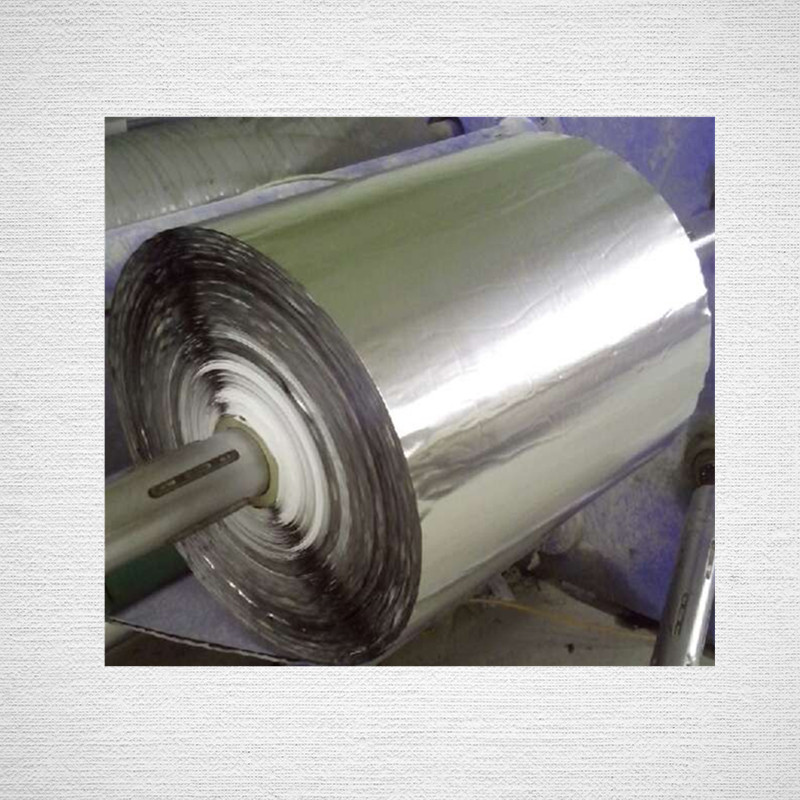Aluminum manganese alloy production method
[China Aluminum Industry Network] There are two methods for producing aluminum flash alloys. Electrolysis and smelting
First, electrolytic method
Electrolysis of cryolite-aluminum oxide-manganese oxide melt in an aluminum electrolytic cell to prepare an aluminum-manganese alloy.
Industrially applied aluminum-manganese alloys generally contain less than 2% manganese, and aluminum-manganese alloys contain about 10% manganese. Aluminum-manganese alloy has good welding performance, strength and corrosion resistance is better than industrial pure aluminum, good plasticity, can be rolled into a variety of profiles of plates, rods, belts, lines and foils, widely used in various industrial sectors. The method of producing aluminum-manganese alloy by doping is a conventional method, which includes preparation of aluminum-manganese master alloy, melting industrial pure aluminum, addition of mother alloy, homogenization and purification, slag removal, and ingot casting. Compared with the blending method, the electrolytic production of aluminum-manganese alloys has the advantages of simple process, uniform alloy composition, low production cost, and the technical conditions for electrolytic production of aluminum-manganese alloys, including the process parameters used in the production process, the feeding system, and aluminum. The manganese content of the manganese alloy. Process parameters refer to the technical data controlled during the electrolysis process. When electrolysis is performed in a 60KA electrolyzer, the working voltage of the electrolyzer is 4.3 to 4.4V, the cryolite ratio is 2.6 to 2.8, and the electrolysis temperature is controlled at about 1233K. The feeding system is a method of adding manganese oxide to an aluminum electrolytic cell. The manganese-containing raw material used in the electrolytic production of aluminum-manganese alloy is manganese dioxide, which generally contains 48% of manganese. Manganese dioxide is added to the surface of the electrolyte and enters the electrolyte when the aluminum electrolytic cell is shelled. Once every 2 to 3 hours, the amount added is calculated based on the manganese content in the alloy. The recovery of manganese in manganese dioxide was 90%. The manganese content of aluminum-manganese alloy is one of the technical conditions that need to be controlled for the production of aluminum-manganese alloy by electrolysis. This method is suitable for the production of low aluminum manganese alloys having a manganese content of less than 2%, because when the manganese content in the alloy exceeds 5%, the aluminum electrolytic cell does not work properly.
Second, the melting method
The post-production of aluminum-manganese-alloy die-cast aluminum alloys is less known in the domestic die-casting industry. Aluminum-manganese alloy has good thermal conductivity, corrosion resistance and toughness, and can be colored by sulfuric acid anodic oxidation, filling the gap in the domestic die-casting industry. It can be used in decorative shells, car models, toys, handicrafts, fishing gear, door handles and other fields. . Compared with common die-cast aluminum alloys, this material has the characteristics of high purity and simple composition. Therefore, in terms of smelting, die-casting, post-processing and surface treatment, it is different from conventional die-casting aluminum alloys. Smelting is an important part of this material. The main points of attention are as follows:
1. Choose graphite with good thermal conductivity (silicon carbide), such as Morgan, Vesuv, etc., avoid the use of poor stability of metal products, such as pig iron, usually aluminum-manganese alloy, the content of iron is not more than 0.2%, silicon The content is about 0.06%, and the pig iron pot will seriously damage its composition, affecting the die casting and oxidation effects.
2. Because of the high melting point of the product, when the temperature is lower than 740 degrees, the aluminum liquid will become viscous, so the refining temperature of the slag is preferably maintained at 740-760 degrees (conventionally 700-720 degrees), after refining Use after standing for 20 minutes.
3, insulation, smelting to ensure uniform heating, avoid temperature fluctuations, easily lead to combustion components, resulting in loss; better use resistance furnace or resistance type reverberatory furnace, suitable for temperature control;
4, do a good job of liquid aluminum slag gas removal and testing, if found in the smelting component loss exceeds the proportion, should be promptly added; attention to maintain the aluminum content of more than 96%, manganese content of not less than 1.2%.
5, due to poor material flow, heat preservation temperature should be controlled at 750 degrees or more, otherwise production is easy to produce cold septum, material full of dissatisfaction and other defects.
6, the coating can be used talcum powder (20-30%) and water glass (3-6%) prepared by adding water, such as procurement from the market, avoid selection of zinc oxide coatings, coating enamel should be uniform, slightly larger than the conventional amount.
7. Pay attention to the storage of waste materials and scraps. The storage place should be kept clean (optional paint or floor can be placed on the surface). Avoid sand, iron or oil contamination.
8, scrap graded to use
First-level waste, such as die-casting waste or large sprue, can be controlled to below 60;
Secondary wastes, such as flash, slag packs, etc., must be degassed after re-melting and slag removal, but note that the use rate is below 40%;
The third-level scraps, such as aluminum scraps, minced chips, etc., are processed into new aluminum ingots and mixed at a 20% ratio, and can be used after being re-distributed to the standard.
Window and door openings (headers, sills,jambs, thresholds, nailing flanges)
_Deck-to-wall intersections
_ Corner boards
_Wall-to-wall tie-ins
_Foundation sill plates
_Sheathing panel seams
_Under stucco finishes
_Car`s insulation
_ Roof detail areas
_ Gutters
_ Mobile home repair
_Other building joints.
_Exposed pipelines protection.

Polyken 940 Aluminum Butyl Tape
Polyken 940 Aluminum Butyl Tape,Aluminum Butyl Tape,Butyl Pipeline Tape,Butyl Rubber Tape,Aluminum Foil Butyl Tape,Aluminum Flashing Tape
Jining Qiangke Pipe Anticorrosion Materials CO.,Ltd , https://www.pipe-wrap-tape.com